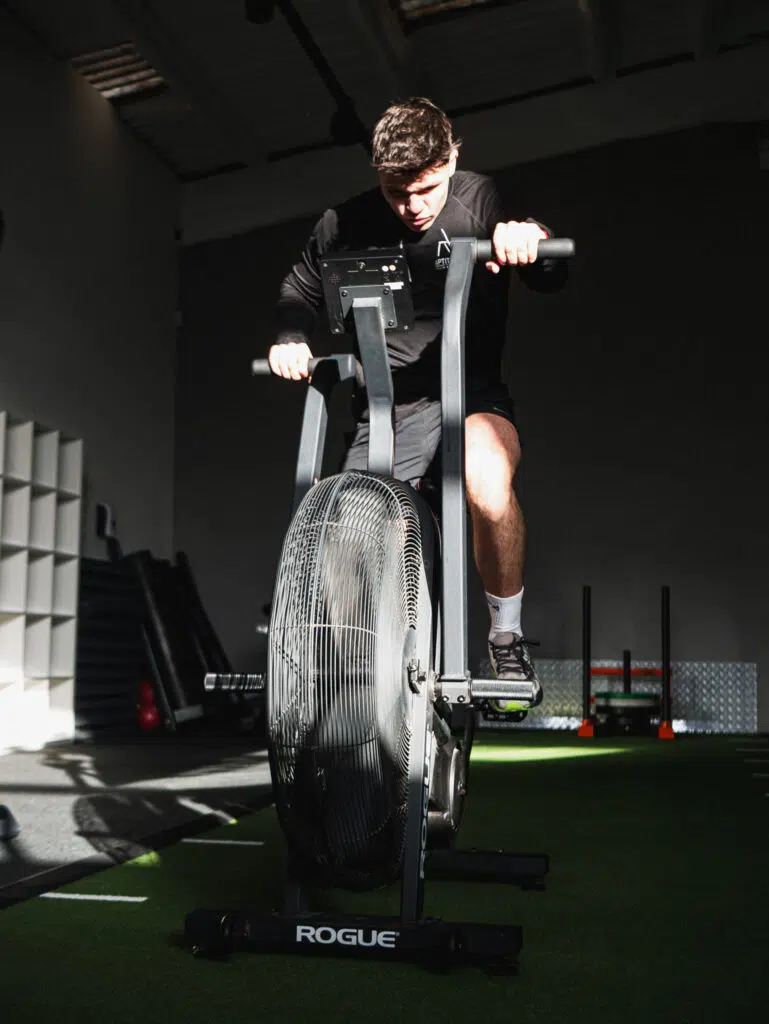Exercise plans, they are like the Google Map for your fitness and when used correctly, they can help you get to your destination safe and sound… Terrible metaphor but you get the drift, right? An exercise plan is there to help you achieve your goals, so when it comes to building your own exercise plan, what do you need to know?
In our latest blog, this is the question we are hoping to answer and point you in the right direction to getting you feeling good with your workout plan.
Remember, our team at Aptitude can help you with all of your exercise plan requirements so if you still need help after reading this, just ask one of our PTs for advice.
Starting from somewhere
We all start from somewhere, and whether you have been lifting for a few years and have even named the dumbbells or you’re a newbie into the weights room, having an exercise plan is a key to achieving your goals.
Spending time wandering around and staring into the void is good after your team crashes out of a cup in the quarter finals but not for your gym progress. You want something that will challenge you physically and show progress.
So, whether you’re new to it, or experienced, it’s good to start with and maintain a plan.

Different exercise plans
There are different workout routines which can help you achieve your goals in different ways.
- First, there is the ‘Push-Pull’ method. It’s like a seesaw – one day you push (working on chest, shoulders, and triceps), and the next, you pull (hello back and biceps).
- Next, the ‘Upper-Lower’ split. It’s as straightforward as it sounds: upper body exercises one day, lower body the next. Perfect for those who appreciate a good body balance.
- Then there is the ‘Bro-Split’. It’s where you workout a different body part every day over five days of the week.
- Finally, the ‘Total Body’ workout. This is the all-in-one, the buffet of exercises – a little bit of everything in one session. A study in the ‘Journal of Sports Science’ found that total body workouts are superb for increasing overall muscle strength. So, pick your potion – each routine has its own magic!
When you are choosing your workout routine or you are changing it after a period of adapting to the workouts, you want to think about your goals. Ask questions like;
- What do I want to achieve with my training?
- How many days a week can I go (see next point)?
- What specific areas do I want to focus on?
- What are my top three goals for weight training?
These will help to dictate the kind of training method and exercises that you pick.
Training Frequencies
If workout routines are how you train, then training frequencies are about how much you train.
There is a whole body of sport science which has analysed the best frequency of training. A study from Edith Cowan University, highlighted in an article on House of Wellness, revealed that exercising three times a week can lead to small but significant increases in strength. This research indicates that such a frequency is more beneficial than one or two longer training sessions per week. Notably, participants who exercised two days a week didn’t experience any improvement, suggesting that the threshold for gaining meaningful benefits lies at a minimum of three exercise sessions per week.
- A 2-day training session shouldn’t however be discounted if you are new to training with weights as the strain at the beginning needs to be managed and treated properly.
- A 3-day routine, as highlighted in the study from Edith Cowan University is known as the Goldilocks of training frequencies – just right.
- A 4-day routine is very good for learning everyone’s name in the gym but can lead to exercise burnout if not careful. From a strength and conditioning perspective, there is no data which shows any adverse effects to this volume however.
When looking at training frequencies, you want to factor in things like rest days as well as possible other physical activity. For example you may have a sport you love to do or go for hikes in the Welsh hills like many of our gym members. Things like this will impact your recovery rate, so taking good care of your exercise plan and rest periods is essential.
How to Select Exercises
Picking exercises is like assembling a dream team of superheroes – each with its own superpower (or muscle group). Men love to focus on upper body muscles, a big chest and shoulders are as much to do with evolution as well as wanting to look like Chris Hemsworth’s Thor…
Women, for similar evolutionary reasons like focusing on lower body muscles. However, the key is balance. Building all areas of the body leads to injury prevention and overall well being.
So, how do you select your exercises? Think of each body part, you’ve got the big guys like chest, back, legs, arms, shoulders, and the often-underrated but crucial, core. Variety here is key. Imagine doing bicep curls every day. Boring, right? Plus, your legs would feel pretty left out. Keep it balanced, keep it fun. And, for credibility, let’s throw in some science – compound movements (like squats and deadlifts) are your best bet for overall strength, says a bunch of people in lab coats.
Conclusion
Creating a workout plan isn’t rocket science, but it does require some thought. Remember, this is your personal fitness story – plot twists and changes are not just okay, they’re encouraged! Experiment, adapt, and find what makes you feel like a superhero in your own gym story. And always keep in mind, the best workout plan is the one you actually stick with – so make it fun, make it challenging, and make it yours.
